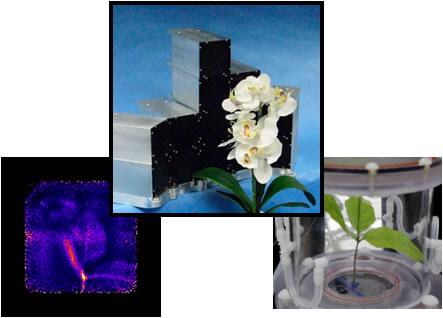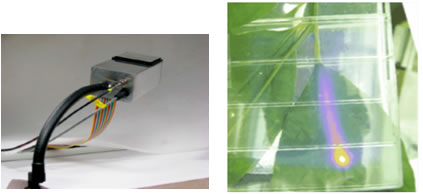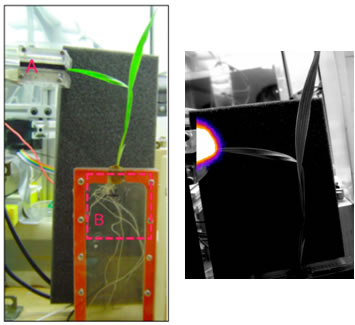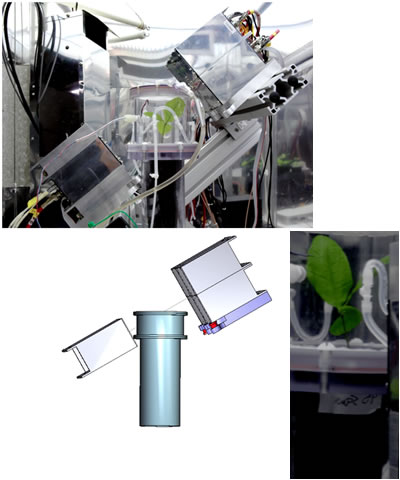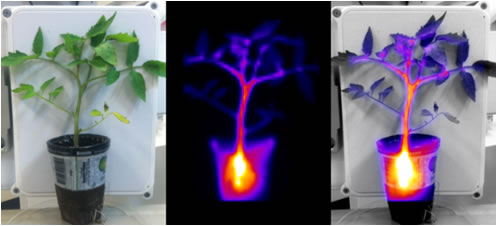Plant Biology Research- biofuel/ agricultural / carbon sequestering
Jefferson Lab and Duke University collaborated on the development of radiation imaging detectors for plant biology research that use the positron (beta-plus particle) emitting radioactive isotope carbon-11 (11C) which is generated by the Triangle Universities Nuclear Laboratory Tandem Van de Graaff accelerator. The 11CO2 tracer is used to facilitate plant biology research toward optimization of plant productivity, biofuel development and carbon sequestration in biomass. The Group's detector systems have been installed at the Duke University Biology's Department Phytotron.
Radiation Imaging Detectors for Plant Photosynthesis Research
| Positron emission tomography (PET) imaging has been used to study carbon transport in live plants using 11CO2 and Jefferson Lab is using nuclear physics detector technology to develop optimized systems for radioisotope imaging in plants. Jefferson Lab has developed PhytoPET, a PET imaging methodology for plant research. PhytoPET is composed of modular gamma-ray imaging detectors to allow for a variety of geometries to accommodate various shaped plants. | Additionally, because plants typically have very thin leaves, often little medium is present in the leaves for the emitted positrons to undergo an annihilation event needed for PET imaging. In this case, most of the positrons do not annihilate inside the leaf, resulting in limited sensitivity for PET imaging. To address this limitation, Jefferson Lab has also developed PhytoBeta, a compact high resolution beta-positive particle imager for 11CO2 leaf imaging. The detector is equipped with a flexible arm to allow its placement and orientation on or under the leaf to be studied while maintaining the lea''s original orientation. | |
|
PhytoPET detector system:
|
PhytoBeta detector system: The detector mounted on flexible arm and leaf with the imaged distribution of carbon-11 overlaid using beta detector. |
|
|
DOE-BER funded radioisotope imaging system development involving Duke University Phytotron and Triangle Universities Nuclear Laboratory |
||
|
Barley
|
Oak seedling
|
|
|
Single photon emitting radioisotopes are also used in plant biology research.The radioisotope Tc99M- is often used to label water transport in plants. Below is a gamma-camera image of Tc99m transport in a tomato pant.
|
||


